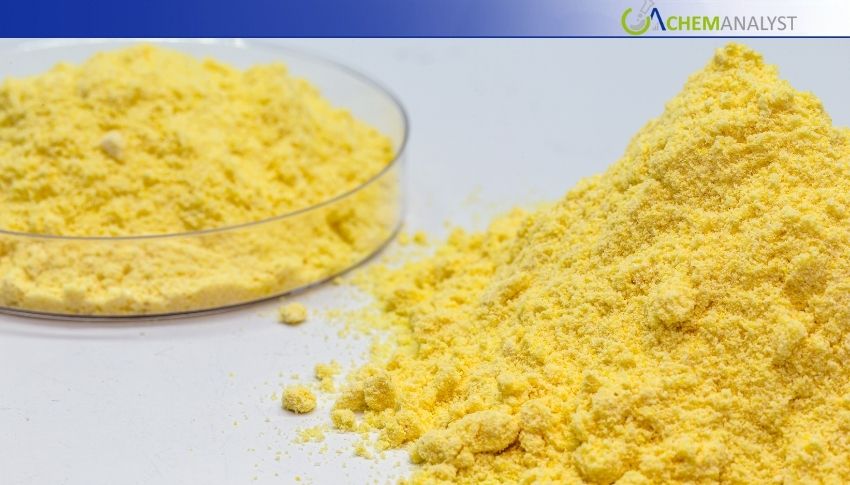Welcome To ChemAnalyst

The North American sulphur prices fell due to a drop in the import prices from Canada in the face of the Canadian resumption of exports after terminal upkeep, boosting supply. A decline in the demand from Asia and strong freight rates put pressure on Canadian sellers, affecting US import prices. Moreover, in the absence of the high plantation season, demand for the commodity was also constrained, lending strength to the prevailing bearishness in the commodity's market sentiments.
The late July has seen a modest decline of 1.06% in US sulphur prices driven by improving Canadian supply dynamics and changing trade flows. Priced out of a considerable share of the US sulphur supply base from Canada, US prices have followed broader regional trends. Traders say the recent easing of CFR levels was an indication of heightened availability from western Canada following the normalisation of export operations at Port Moody after the July overhaul.
The Pacific Coast Terminal (PCT) at Port Moody resumed sulphur shipments at the normal pace on 22 July after completing planned turnaround maintenance. Although terminal inventories were briefly low in the early days following the maintenance interval, loadings rebounded during the last week of July as producers laboured to rebuild stocks. Based on port statistics, approximately 110,400 tons of sulphur had been exported from Vancouver by late July.
Canadian suppliers to the Chinese market, in turn, have seen declining netbacks over the past few weeks as delivered prices softened in Asia and firm freight rates cut their margins. Canadian FOB values, therefore, have been pressured, which in turn has translated into downstream markets like the US, which both directly and indirectly imports sulphur through Canadian shipments. Market players anticipate that with shipping prices expected to ease in August, Western Canada's export competitiveness is likely to improve even more.
Domestically, the US market continues to work through trade disruptions arising from impending US-origin sulphur tariffs to Brazil. With new duties planned to be enforced on 1 August, any sulphur cargoes to Brazil from the US Gulf Coast have been suspended, restricting US producers' outbound avenues. During the first five months of 2025, the US exported 168,100 tons of sulphur to Brazil, making the route extremely important. Tariff threats and diplomatic tensions between Brasília and Washington have cooled the mood and might briefly extend supply in the Gulf market.
Despite short-term softness in prices, sulphur demand is likely to recover later in Q3 on the back of increasing production in the phosphate fertiliser industry for autumn planting. Diminished imports of phosphate fertilisers into the US under the pressure of tariffs could signal higher domestic output, hence supporting sulphur consumption. Nevertheless, for the time being, enhanced Canadian availability and diminished Asian export demand continue to dampen landed sulphur prices in North America.
We use cookies to deliver the best possible experience on our website. To learn more, visit our Privacy Policy. By continuing to use this site or by closing this box, you consent to our use of cookies. More info.
